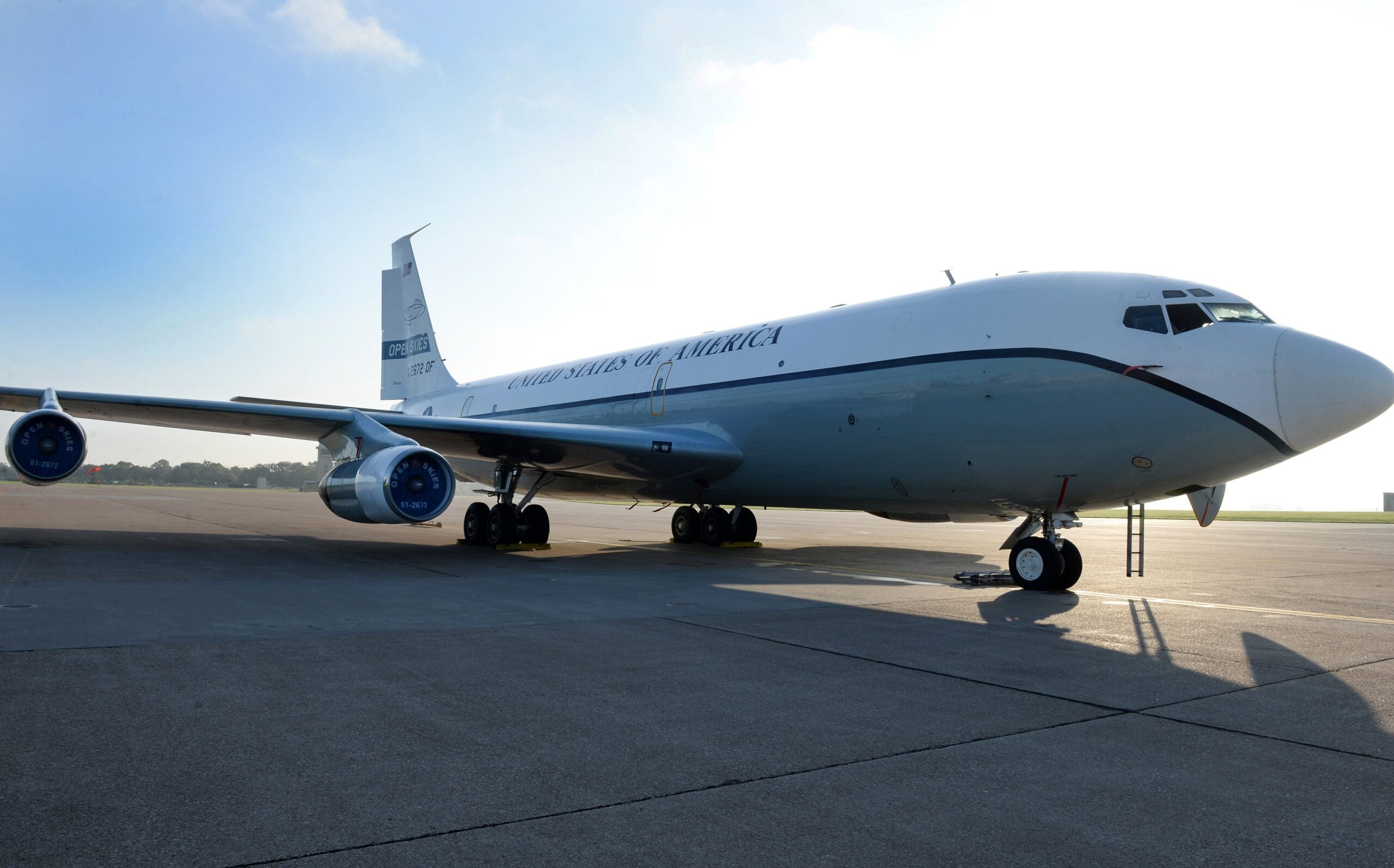
The Trump administration announced in May that it was seeking to withdraw from the treaty that allows signatories to conduct military surveillance flights over each other’s territory.
In a statement, the US State Department said: “On May 22, 2020, the United States exercised its right pursuant to paragraph 2 of Article XV of the Treaty on Open Skies by providing notice to the Treaty Depositaries and to all States Parties of its decision to withdraw from the Treaty, effective six months from the notification date.
“Six months having elapsed, the US withdrawal took effect on November 22, 2020, and the United States is no longer a State Party to the Treaty on Open Skies.”
At the time, the US cited Russian non-compliance as part of its reasoning, following Russia restricting flights over some regions of Georgia. Commenting on the formal withdrawal, US Secretary of State Mike Pompeo said it made the US ‘more secure’.
Pompeo tweeted: “Today, pursuant to earlier notice provided, the United States withdrawal from the Treaty on Open Skies is now effective. America is more secure because of it, as Russia remains in non-compliance with its obligations.“
The Wall Street Journal reported that the US is drawing up plans to sell the Boeing OC-135B Open Skies observation aircraft it had used to conduct the surveillance overflights.
How well do you really know your competitors?
Access the most comprehensive Company Profiles on the market, powered by GlobalData. Save hours of research. Gain competitive edge.

Thank you!
Your download email will arrive shortly
Not ready to buy yet? Download a free sample
We are confident about the unique quality of our Company Profiles. However, we want you to make the most beneficial decision for your business, so we offer a free sample that you can download by submitting the below form
By GlobalDataThe post-Cold-War treaty came into effect in 2002 and was designed to increase understanding between its members.
The withdrawal from the treaty has drawn criticism from lawmakers from both the US Senate and Congress, with influential committee members admonishing the move.
In a joint statement, the Chairman of the House Committee on Foreign Affairs Representatives Eliot Engel and Chairman of the Subcommittee on Europe, Eurasia, Energy, and the Environment William Keating said: “Yesterday, President Trump completed his reckless campaign to withdraw the United States from the Treaty on Open Skies.
“Once again, he has pulled our country out of a critical arms control agreement while ignoring repeated warnings from defence and security experts, Congress, and allies and partners about the dangers a withdrawal would pose for US and allied security.”
The Chairman of the House Armed Services Committee Representative Adam Smith said that the decision to proceed with the withdrawal from the treaty would affect the country’s relationship with allies in Europe.
For its part, the UK – another member of the treaty – said it understood the US concerns around non-compliance by Russia.
A UK Government spokesperson told Air Force Technology: “The UK Government was informed of the US decision to withdraw from the Open Skies treaty and understands their concerns about Russian non-compliance.
“The UK remains committed to the treaty, but the US is our closest ally and we continue to work with them to ensure our shared security and prosperity.”
Smith added: “The importance of alliances and confidence-building measures to support strategic stability in Europe in the face of Russian aggression must be a priority for the next Administration.
“For four years the Trump Administration has worked to undermine these relationships and dismantle agreements that uphold transatlantic stability, and I am confident President-elect Biden will immediately work to rebuild US leadership and hold Russia accountable for their destabilising actions as soon as he is sworn into office.”
President Trump also drew criticism for not notifying Congress of the move. Under the 2020 National Defense Authorization Act (NDAA) – which funds the US Department of Defense (DOD) – Engel and Keating said that Trump should have given lawmakers 120 days’ notice before ‘announcing his intent to leave the treaty’.
In their statement, Engel and Keating also called for the incoming Biden administration to look to re-join the treaty.
Ranking Member of the Senate Foreign Relations Committee Senator Bob Menendez said: “As I have stated previously, the administration’s decision to withdraw from the Open Skies Treaty is reckless and leaves the United States and our allies less secure against Russia.
“For nearly twenty years, the Treaty, which the Senate approved unanimously, has provided the United States and our allies important insights into Russia’s military. “
Menendez added that the decision to press ahead with the withdrawal reflected the Trump administrations continued ‘pattern’ of withdrawal from arms control agreements. Since taking office, the Trump administration has also withdrawn from the Intermediate-Range Nuclear Forces (INF) treaty.
Withdrawal from the INF Treaty leaves the world with just one treaty – New START – governing the world’s two largest nuclear arsenals, that of the US and Russia.
Despite withdrawing from the Open Skies Treaty, Russian aircraft will still be able to conduct overflights of the members in Europe, most of which are home to US Military bases.
In a statement, the Russian Foreign Ministry wrote: “Now that it has left the Treaty on Open Skies, the United States expects its allies to prevent Russia from carrying out observation flights over US military sites in Europe, while also sharing with Washington their aerial footage of the Russian territory.”







